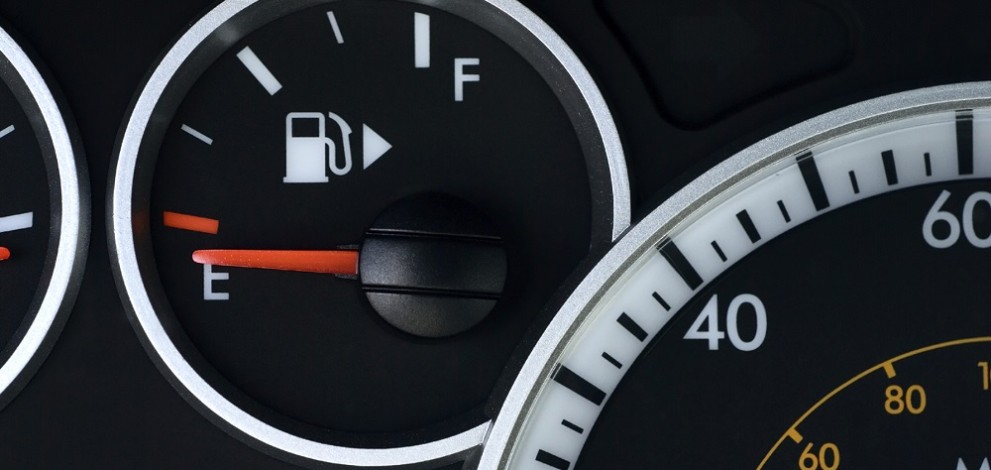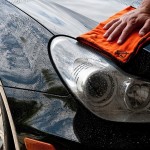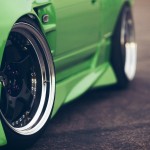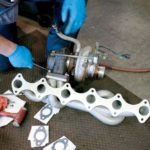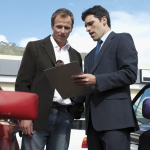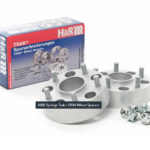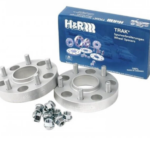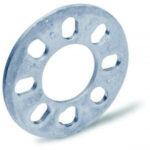Your car is very expensive. And I don’t just mean the sticker price.
Financing, insurance, maintenance, parking and even running that red light last Wednesday all drive up the cost of owning your car.
But before considering anything drastic.. like taking the bus.. consider improving your fuel economy!
You can buy a diesel, a hybrid, or even trade down to a smaller vehicle to save money at the pump. But don’t sign that new car lease just yet!
10 SECONDS OF IDLING SENDS MONEY DOWN THE DRAIN

Think of how often you sit in your car waiting. And we both know you keep the engine running to power your radio.
If you want to improve your car’s MPG, you need to avoid this. If you’re idling for more than 10 seconds – cut your engine! It’s more efficient to turn off and restart your engine than to keep it running.
When your engine is turned off, it’s not burning fuel. And every little bit helps.
So if you want to listen to the radio, click over to accessory mode. If you’re stuck in a long line at the drive-through, turn off your engine. And if it’s cold out, warm your engine for no more than 30 seconds.
Thinking of buying a new car? Consider vehicles with built-in start/stop systems. They automatically kill your engine when you’re halted and restart it when you begin to move. This technology will give you massive efficiency gains. Especially if you live in the city or drive in heavy traffic.
BUY GAS ON COLD WEDNESDAYS

When your body is running low on fuel, what’s the first thing you do? You look for tasty food.
It’s the same with your car.
Running low on fuel puts unnecessary stress on your fuel pump. So your tank should always be at least ¼ full for optimal efficiency. But when you’re at the station, don’t top her off! Fill up halfway. Every 40 liters of gas adds 60 lbs. of weight and decreases your economy.
To continue the analogy form before.. when you’ve had too much to eat, your body wants to take a nap.
And you don’t want your car to nap, do you?
You also need to fill up your car with the instructed grade of fuel. If your car needs regular gas, buying premium won’t come with its usual advantages. It will just cost more. And if your car needs a 93 octane level, filling her up with anything less may cause internal engine damage.
That being said, no two fuels are the same. The discount brand will save you a few bucks, but it probably contains more ethanol. Ethanol burns at a faster rate. And you’ll have to make more trips to the gas station.
To find out what’s best for your car, compare your mileage with different fuels.

Buy gas on Wednesdays. Statistically, that’s when gas is the cheapest. It won’t be true every week, but it will save you money in the long run.
Gas prices also jump before the holidays, so think ahead and fill up before the rush.
It’s smart to buy gas during the coolest time of day. That’s when gasoline has the highest density. This means you will fill up your tank with the highest concentration of fuel per liter.
And please make sure your gas cap is screwed on tight! Improperly sealed caps are the cause of nearly 550 million liters of fuel to vaporize every year in the U.S. alone!
YOUR TRUNK MAKES AN EXPENSIVE STORAGE UNIT

Excess weight kills fuel efficiency. Especially with stop-and-go driving.
So clean out your trunk, hatch and truck bed from stuff you don’t really need. And honestly, you don’t need your fishing and camping gear with you in the car on your way to work tomorrow.
Using your trunk as storage space actually costs you money. The lighter your car is, the more economical it is. Extra weight is one of the biggest causes for loss of kinetic energy and an extra 100 lbs. will increase your car’s fuel consumption by up to 2%.
YOUR CAR’S SERVICE LIGHT IS ILLUMINATING

Is your air filter clean?
If it’s dirty, it’s restricting your engine from breathing. That leaves you with crappy performance and bad fuel economy.
Imagine if you had to run a marathon while breathing through a small straw. That’s how your engine feels while running with an old or damaged air filter. So if you’re in doubt, you should replace it. It’s a cheap component and you can put it in yourself. Your engine and your wallet will thank you for it.
Tune up your engine. This will maximize power and will noticeably improve your fuel efficiency. And find a gear ratio appropriate for your engine, transmission, and driving conditions.
You need a higher ratio if most of your driving is on the highway and you don’t carry heavy loads. But be careful. A smaller engine with a too high gear ratio will work too hard and may become damaged.
Will tuning your car void your manufacturer warranty? The answer is no. But you need to be smart.

Check your mass air flow sensor, oxygen sensor, and spark plugs, too.
Your mass air flow sensor measures the air flow entering your engine. It relays the information to your engine computer. The information is needed to carry out proper adjustments to your car’s fuel injection, ignition system and transmission shifting. So if the mass airflow sensor is dirty, it will send inaccurate data and adversely affect your fuel economy.
In the same way, your oxygen sensor measures the exhaust flow before and after your catalytic converter. The sensor sends the data to your engine computer, and if it’s incorrect you’ll end up with a fuel mixture which is too rich.
A damaged oxygen sensor can decrease your fuel efficiency by 20% or more!
As a rule of thumb, you need to replace the oxygen sensor on cars with more than 160,000 km.
Your spark plugs are what ignite the air/fuel mixture in your engine’s combustion chamber. Replacing old spark plugs will ensure your engine is running cleaner and is more efficient!
And when’s the last time you changed your oil?
Fresh oil is critical for the efficient operation of your car’s engine. If you wait too long to change it, it will thicken and become hard to pump. This will tamper with your fuel efficiency.
When you’re changing your oil, add a synthetic oil additive to increase mileage. Using synthetic oil should save you up to 5% on your next gas bill. But if you can’t use it, go with the lightest possible option (5W-30 instead of 15W-50).
UNDER-INFLATED TIRES ARE BAD NEWS

Some drivers spend years without checking tire pressure. Don’t be one of them for obvious reasons.
If the pressure is too low, your tires are facing extra resistance on the road. And this decreases fuel economy. Tires with the right pressure will improve your fuel economy by up to 3%!
Keep this in mind.. your tires will lose 1 PSI every month. And if it’s cold out, their pressure will decrease even more because of the thermal contraction of the air.
It’s a good idea to check your tire pressure at least once a month. But why not make it a habit, and check and adjust every time you fill up your car? Most gas stations have automatic air compressors.
To figure out the optimal inflation pressure, check the placard usually mounted on the sidewall of your driver’s door. Inflate to that number and not the maximum stamped on your tire. Also, don’t go by your car’s manual unless you have stock tires installed.
Keep in mind that the recommended pressures are given for cold tires. You should add another 3 PSI if your tires are older.
If you’re buying new tires, choose narrower ones for better fuel economy. They have a smaller frontal area and will reduce aerodynamic drag. Low-rolling-resistance compound tires will also improve your fuel economy by a few percent.
GOOD DRIVING HABITS WILL TAKE YOU A LONG WAY

So, your trunk is empty and your car is in mint condition. You’re on the road and making real gains in fuel economy.
But why the rush?
To really win at this game you have to slightly alter your driving habits.
Your car’s fuel mileage plummets off a cliff when you increase your speed past 80 km/h. The faster you go, the harder your engine has to work to push through the wind.
Slow down, keep your foot off the gas and turn on your cruise control. This will increase your fuel efficiency by moderating throttle inputs and give you a more relaxed drive.
For maximum efficiency, figure out your car’s “sweet speed”. It’s your car’s minimum speed at its highest gear. For example, Jeep Cherokees are best at 89 km/h, and Toyota 4Runners are best at 80 km/h. Once you know it, just pick your route accordingly.

And while you’re at it – turn of the A/C and turn down your windows. Unless you’re driving on the highway! Fuel efficiency is higher when you have your A/C on and your windows rolled up with highway speeds.
Monitor your car’s RPMs (revolutions per minute). If your engine is running above 3000 you might be accelerating at an unnecessarily low gear. So step off the gas, and let your engine build up a higher speed at a lower RPM.
Low RPMs directly translate into higher fuel economy.
Accelerate smoothly and with moderate throttle. By anticipating the actions of other drivers you can keep your momentum and avoid braking. And you should avoid braking whenever possible.
Drive with a constant speed. If you’re driving on a city street, simply coast slowly if you see a red light or traffic ahead.

Is all of this practical? Let us know in the comments below!
But even if you don’t choose to use all of the techniques doesn’t mean you shouldn’t use any.
Simply turning off your car at red lights can save you 19% on your next trip to the gas station.
Want to hear more? Sign up for our newsletter to receive more sweet tips and industry news!


